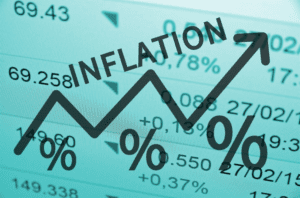Attention! People disappeared in Chernihiv, Kiev and Kharkov regions. Please help us find:
1. Bazhenkov Konstantin Anatolyevich 11/27/1983. Was in Kharkov. Disappeared on March 2 after an air strike near the Shevchenko plant. Signs: has a scar after the removal of the appendix. On the right hand, after a surgical operation, the little finger and ring fingers are not fully extended.

Bazhenkov Konstantin Anatolievich
If you have any information about Konstantin’s whereabouts, please call:
+380966270488 (Irina Marchuk – sister).
2. Zaets Maxim Svyatoslavovich. 11/03/1988 Was in Bucha.

Zaets Maxim Svyatoslavovich
If you have any information about Maxim’s whereabouts, please call:
+380674047722 (Kurinenko Yulia Boleslavovna).
3. Petrenko Andrey Vladimirovich. 04/23/1989 Was in Chernihiv. The connection disappeared on February 27, 2022 after 16.00, left for the Epicenter area.

Petrenko Andrey Vladimirovich
If you have any information about Andrey’s whereabouts, please call:
+380638727974, +380984112069, e-mail: konodub96@gmail.com (Ekaterina)
We ask citizens whose relatives do not get in touch to send us all the information. We recommend using the following contact form:
1. Full name of the missing person;
2. Your contact details;
3. Photo of the missing person, description of special features;
4. Approximate place of the last stay of the missing person.
The “Find Your Loved Ones” project is non-commercial, all your appeals will be edited and published free of charge in the media.
We invite colleagues from the media to join the initiative!
The project coordinator is Maksim Urakin, deputy head of the Interfax-Ukraine news agency and publisher of the Open4Business project.
Send information about the missing by e-mail maksim.urakin@gmail.com

Passenger traffic from the EU countries and Moldova to enter Ukraine on April 16 for the first time since the start of the war by Russia exceeded the flow to exit, the State Border Service of Ukraine reports. The day before, for the first time since February 24, a similar fact was recorded on the Polish-Ukrainian section of the border.
According to the agency on Facebook, on April 16, a record high number of people again entered Ukraine – more than 38 thousand compared to more than 36 thousand the day before, including Ukrainians – 35 thousand compared to 32 thousand on Friday.
At the same time, the flow in the opposite direction decreased to more than 32,000 from almost 38,000 a day earlier.
The agency also clarified that over the past day, the number of registered vehicles with humanitarian cargo increased to 500 from 420-425 in the previous two days.
According to the data of the Polish border service on Twitter, on April 16, 22 thousand entered Ukraine from the country against 25.1 thousand the day before.
In the opposite direction, the flow amounted to 19.2 thousand, which is 21% less than on April 15, and over the first 7 hours of Sunday it fell by another 22.5% to 4.2 thousand.
According to UNHCR data, as of 13:00 on April 15, a total of 4.84 million people have left Ukraine since the beginning of the war (excluding the entry flow), of which Poland received 2.74 million, Romania and Moldova – 797.31 thousand, Russia – 484.73 thousand, Hungary – 454.1 thousand, Slovakia – 332.71 thousand, Belarus – 22.83 thousand.

The Cabinet of Ministers has approved the attraction of concessional funds from the Japanese government in the amount of 13 billion yen (about $103.75 million at the current exchange rate), Prime Minister Denys Shmygal announced.
“Today, at a government meeting, we finalized agreements with the government of Japan to raise aid in the amount of 13 billion yen,” Shmygal said in his address on Friday evening.
According to him, these preferential funds will be used to finance the priority needs of the country and the Ukrainian people.

The United Nations World Food Program (WFP) deepens cooperation with Ukraine in the context of the blocking of its maritime agricultural exports by warships of the aggressor country of the Russian Federation, the issue of the organization’s purchase of Ukrainian grain and its subsequent delivery to countries that are threatened hunger.
The relevant issue was discussed by Minister of Agrarian Policy and Food of Ukraine Mykola Solsky and WFP Executive Director David Muldow Beasley during a meeting in Kyiv, according to the website of the Ukrainian department on Friday.
“The possibility of purchasing surplus grains in Ukraine at the expense of the World Food Program was discussed in order to provide food for the countries of Africa and the Middle East and prevent global famine in these regions, the threat of which is very real,” the ministry said in a statement.
The agency stressed that WFP has deployed large-scale humanitarian assistance to Ukrainians affected by the war. In particular, contacts have been established with bakeries, flour mills and food industry enterprises in Ukraine for the purchase of goods from them and subsequent delivery to the regions affected by the Russian military invasion.
“We are talking about about 40 thousand tons of food products. Seven warehouses have been opened in Kyiv, Lvov, Dnipro, Vinnitsa, Chernivtsi, Odessa and Kropyvnytskyi. And in Lviv, Vinnitsa and Ivano-Frankivsk regions, financial assistance is provided to immigrants,” Beasley quotes press service of the Ministry of Agrarian Policy.
In turn, Solsky during the meeting focused on the need to unblock Ukrainian seaports and shipping routes in order to ensure the export of agricultural products from Ukraine.
“In order to stabilize the situation, it is important to ensure the logistics of supplies of agricultural products from Ukraine through unblocked ports and alternative routes. In addition, small and medium-sized Ukrainian farms and agricultural enterprises, which play a big role in ensuring national and global food security, need urgent help,” – quotes the department of its head.
As reported, on April 13, UN Secretary General António Guterres said that the war in Ukraine could doom more than 1/5 of humanity to poverty, want and hunger unprecedented for decades.
Deputy Minister of Economy – Trade Representative of Ukraine Taras Kachka stressed that the reason for the threat to world food security and rising prices for agricultural raw materials is the blockade of Ukrainian ports by Russian warships, therefore the lifting of the naval blockade of Ukraine is more effective for the food security of the world than the creation of new special funds. He stressed that Ukraine must repulse the aggressor at sea and on land, so that Ukrainian grain and oilseeds would reach the world market in full.
To date, the capacity of alternative logistics routes bypassing Ukrainian seaports is estimated at 600,000 tons of crops per month. This figure can be increased to 2-3 million tons of agricultural crops per month by increasing the capacity of railway and logistics crossings at the borders with the EU countries.
Before the Russian military invasion, Ukraine monthly exported up to 5 million tons of agricultural products through the ports of Odessa and Nikolaev, but now, due to their naval blockade by the Russian Federation, the country can transport about 500 thousand tons of grain monthly. This leads to a monthly shortfall of about $1.5 billion in export earnings.

The National Bank of Ukraine (NBU) expects a significant deterioration in trade indicators in 2022, but with a current account deficit near zero at the end of the year, Deputy Head of the Central Bank Serhiy Nikolaychuk said during a discussion organized by the Center for Economic Strategy (CES).
“So far, given our basic assumptions, we expect the current account deficit to be close to zero throughout this year. But in the memo, take into account that the outflow from the current financial account will be quite significant,” he said.
The deputy head of the National Bank noted that he had questions about the statistics recently published by the Ministry of Economy, in which imports in March fell significantly more than exports. “Based on the payments that we see, we do not see such a sharp reduction in imports and do not see that exports feel much better than imports,” Nikolaychuk stated.
According to him, an important component is the expansion of expenses of Ukrainian citizens abroad, which are not visible in the statistics for imports, but are visible in the payments of Ukrainian banks in foreign currency for Visa and Mastercard settlements. “In the balance of payments, this is an operation that leads to an expansion of the current account deficit,” the deputy head of the NBU explained.
He also clarified that now, when analyzing the current account, it is necessary to take into account that for a month and a half a significant part of imports came as humanitarian or military aid.
“We will see an increase in the trade deficit, but this will be offset by transfers to the secondary income account. That is, free humanitarian aid leads to a neutral impact on the current account,” the deputy head of the National Bank said.
It is also important to keep track of income from IT services, the dynamics of transfers, as there are different scenarios and different opportunities and risks, Nikolaychuk added.
In his opinion, imports will remain suppressed for a sufficiently long period, so the situation with the payment account will not be so bad. “But at the next stage, when we talk about the restoration of the Ukrainian economy after the war, we can count on a greater expansion and current account deficit. But let’s hope for financing from different sources,” the deputy head of the National Bank emphasized.
As reported, the World Bank, in its strongly deteriorated forecast for Ukraine, released this week, expects a current account deficit of 6.8% of GDP this year and its expansion to 16.8% of GDP in 2023.

Inflation in Ukraine by the end of 2022 may exceed 20% due to the consequences of a full-scale war, but it will be controlled, the National Bank of Ukraine said on Thursday.
According to the report, the increase in the price of goods and services will be due, in particular, to disruption of production processes, logistical problems due to the temporary occupation of part of the territories, the destruction of transport infrastructure and, as a result, an unevenly distributed supply across individual regions.
In addition, the inflation growth will be affected by the pass-through effects of the devaluation of the hryvnia exchange rate that occurred on the eve of the war and the high cost of energy in the world, which will put pressure on the cost of fuel, goods and services with a significant share of energy in the cost.
At the same time, price growth will be restrained by measures taken by the National Bank and the government of Ukraine, including temporary fixing of the hryvnia exchange rate, which curbs the likely worsening of expectations and an increase in the price of imported goods, tax cuts, including indirect taxation of imports, price fixing for housing and communal services, and administrative regulation of prices for a number of foodstuffs and fuels.
An additional constraint will have an oversupply of certain agricultural crops due to limited export opportunities.
It is indicated that after the resumption of the functioning of monetary transmission channels, the National Bank will again apply the discount rate and other monetary instruments to keep inflation expectations under control and gradually reduce inflation.